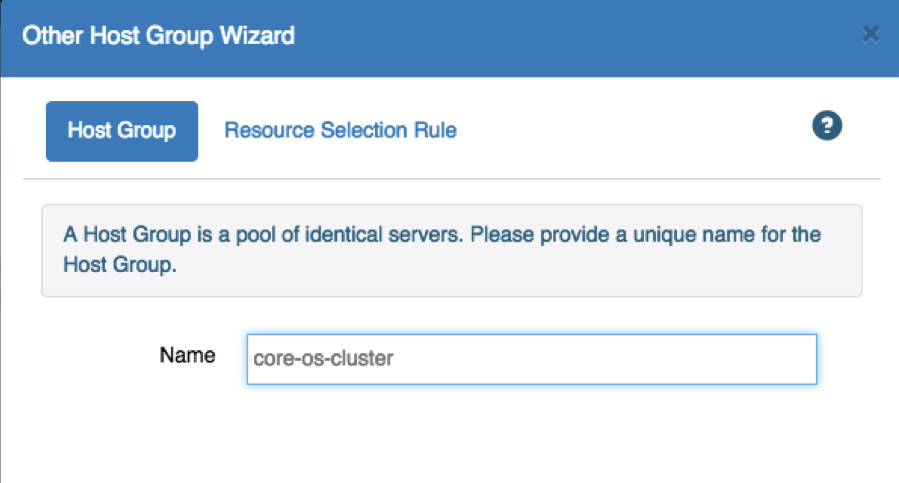As application container adoption continues to grow, the popularity of ‘minimal’ operating systems, designed to run containers, is on the rise. One such operating system is CoreOS. CoreOs has been architected to run modern, cloud native applications and provide support for Docker containers.
Ritesh Patel
Recent Posts
Deploying microservices style applications with CoreOs, Docker and Nirmata
[fa icon="calendar'] Mar 10, 2015 7:09:58 PM / by Ritesh Patel posted in Product
Deploying microservices style applications with CoreOs, Docker and Nirmata
[fa icon="calendar'] Mar 10, 2015 7:09:58 PM / by Ritesh Patel posted in Product
As application container adoption continues to grow, the popularity of ‘minimal’ operating systems, designed to run containers, is on the rise. One such operating system is CoreOS. CoreOs has been architected to run modern, cloud native applications and provide support for Docker containers.
Nirmata private cloud support, private docker registry support and more..
[fa icon="calendar'] Feb 27, 2015 1:33:30 PM / by Ritesh Patel posted in Product
We are super excited to share some recent product updates. Since our beta launch, the usage and feedback has been terrific! Over the last few weeks, we have been busy adding new capabilities to Nirmata as well as addressing issues reported by our users. Here they are:
Nirmata private cloud support, private docker registry support and more..
[fa icon="calendar'] Feb 27, 2015 1:33:30 PM / by Ritesh Patel posted in Product
We are super excited to share some recent product updates. Since our beta launch, the usage and feedback has been terrific! Over the last few weeks, we have been busy adding new capabilities to Nirmata as well as addressing issues reported by our users. Here they are:
Service discovery and dynamic request routing with Nirmata
[fa icon="calendar'] Feb 17, 2015 4:56:13 PM / by Ritesh Patel posted in Product
As microservices style architectures are becoming more common, new architectural patterns are emerging. Microservices style applications are highly distributed and dynamic, and a key architectural constraint for microservices applications is elasticity i.e. A microservice must be able to scale, up or down, independently of other services in the same application [1]. As a microservice scales up or down, other services need to be able to find it and communicate with its instances, resulting in requests being distributed across all instances of that service, and enabling the application to scale horizontally. There also needs to be some built in mid-tier load balancing (i.e. service-to-service) so that requests to a service get evenly distributed across its instances.
Service discovery and dynamic request routing with Nirmata
[fa icon="calendar'] Feb 17, 2015 4:56:13 PM / by Ritesh Patel posted in Product
As microservices style architectures are becoming more common, new architectural patterns are emerging. Microservices style applications are highly distributed and dynamic, and a key architectural constraint for microservices applications is elasticity i.e. A microservice must be able to scale, up or down, independently of other services in the same application [1]. As a microservice scales up or down, other services need to be able to find it and communicate with its instances, resulting in requests being distributed across all instances of that service, and enabling the application to scale horizontally. There also needs to be some built in mid-tier load balancing (i.e. service-to-service) so that requests to a service get evenly distributed across its instances.
Deploy applications, not containers!
[fa icon="calendar'] Feb 9, 2015 4:52:43 PM / by Ritesh Patel posted in Product
Deploy applications, not containers!
[fa icon="calendar'] Feb 9, 2015 4:52:43 PM / by Ritesh Patel posted in cloud applications, Containers, Product, DevOps
Cloud Applications: Migrate or Transform?
[fa icon="calendar'] Dec 18, 2014 2:10:40 AM / by Ritesh Patel posted in Engineering
Cloud computing is forcing application developers to think differently about application architecture. Just as client side developers faced a huge paradigm shift from desktop to mobile application development, server side developers are experiencing a similar shift as they develop applications for the cloud. Deploying an application that is not architected for cloud (i.e. cloud native) cannot harness any benefits of the underlying cloud infrastructure and will result in increased operational costs in the long run. For developers building new cloud applications it is absolutely critical to get the architecture right the first time and avoid costly redesigns.
Cloud Applications: Migrate or Transform?
[fa icon="calendar'] Dec 18, 2014 2:10:40 AM / by Ritesh Patel posted in cloud applications, Continuous Delivery, Engineering
Cloud computing is forcing application developers to think differently about application architecture. Just as client side developers faced a huge paradigm shift from desktop to mobile application development, server side developers are experiencing a similar shift as they develop applications for the cloud. Deploying an application that is not architected for cloud (i.e. cloud native) cannot harness any benefits of the underlying cloud infrastructure and will result in increased operational costs in the long run. For developers building new cloud applications it is absolutely critical to get the architecture right the first time and avoid costly redesigns.


